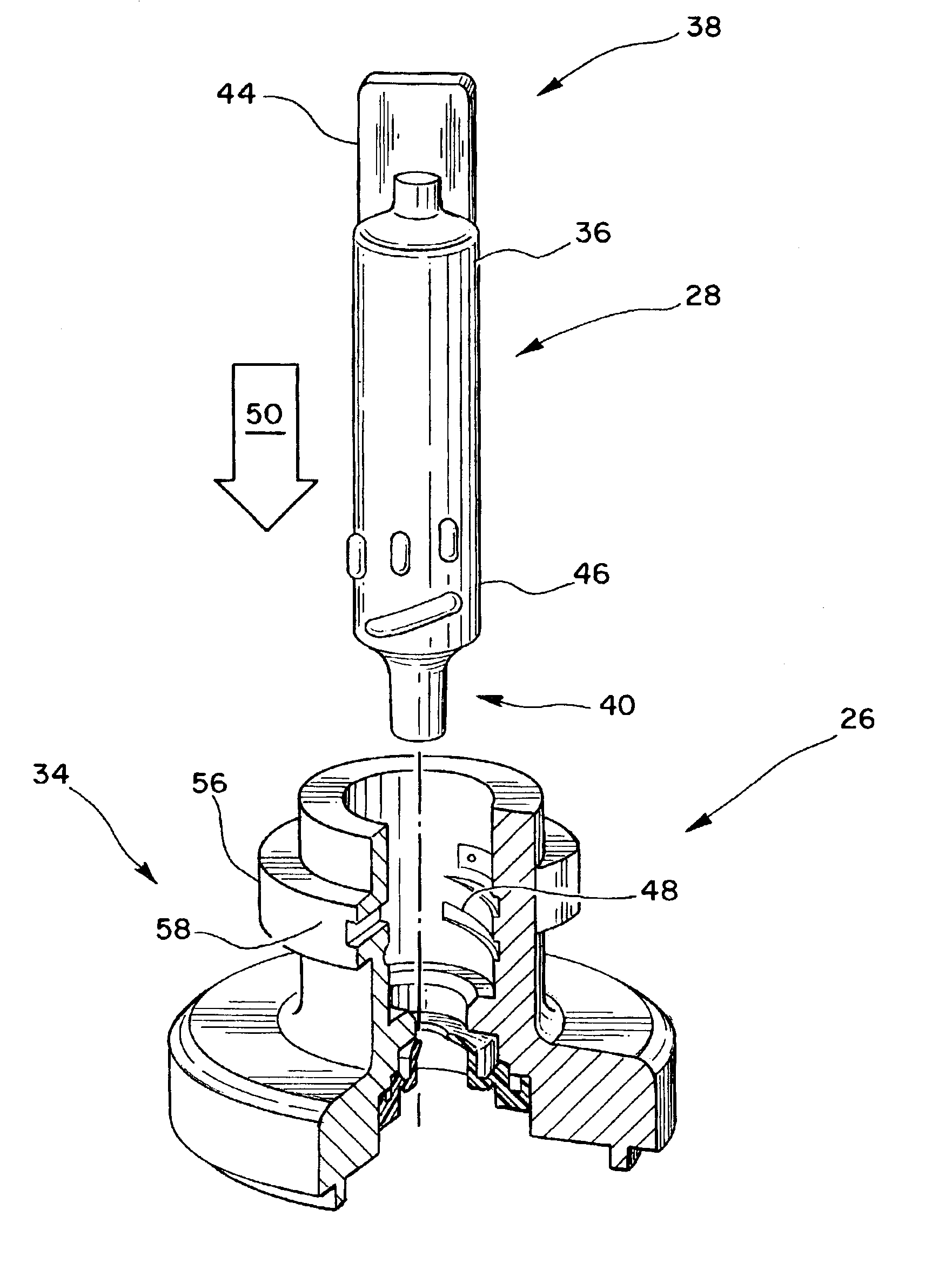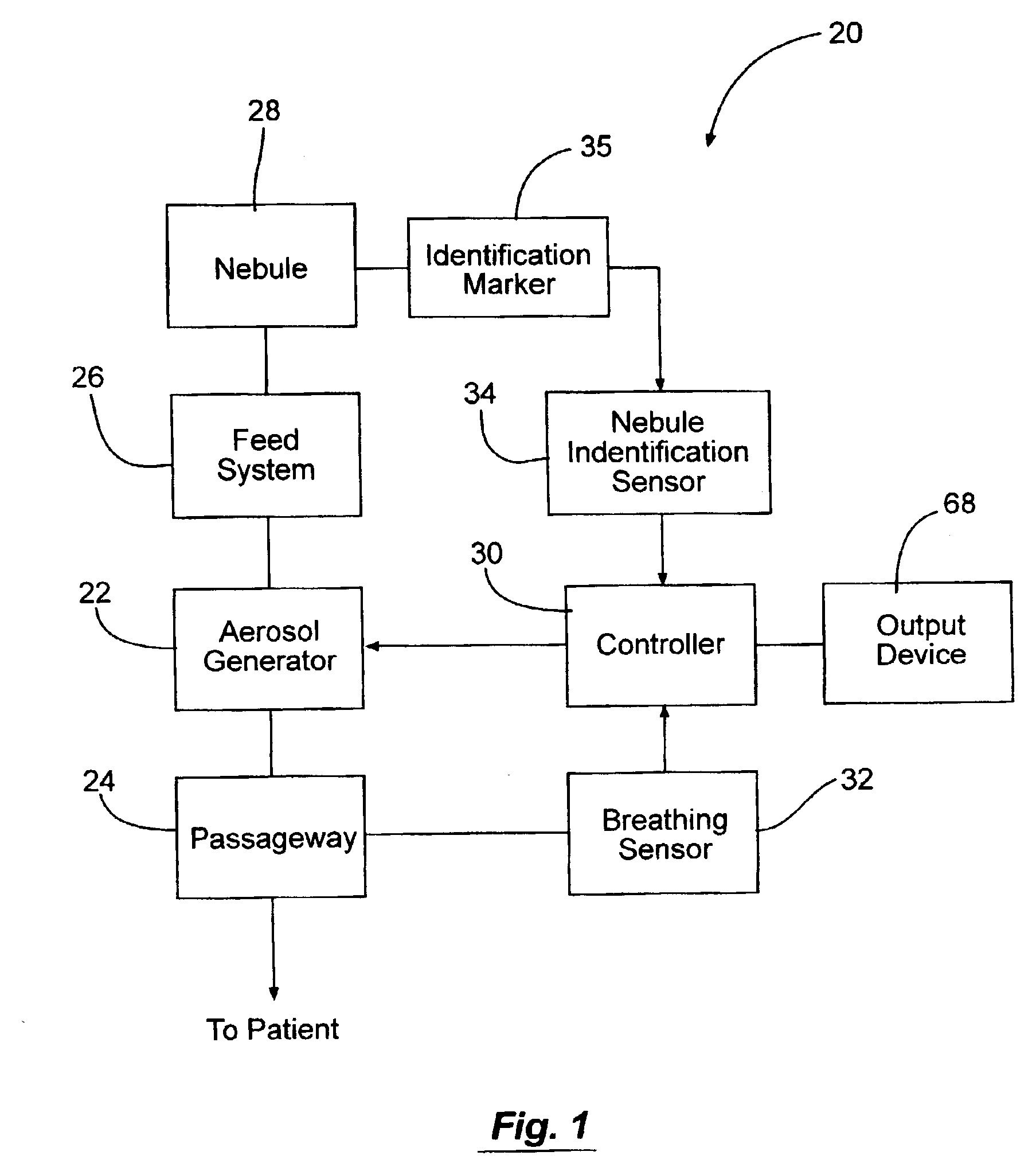Methods and systems for operating an aerosol generator
a generator and aerosol technology, applied in the field of liquid aerosol generators, can solve the problems of inadvertent installation and nebulization of incorrect drugs into the aerosol generator, the inability to deliver the wrong drugs, and the inability to meet the needs of patients, so as to improve the safety of the patient and increase the efficiency of the delivery of the aerosol to the patien
- Summary
- Abstract
- Description
- Claims
- Application Information
AI Technical Summary
Benefits of technology
Problems solved by technology
Method used
Image
Examples
Embodiment Construction
[0049]The aerosol generator systems of the present invention, in one aspect, include an aerosol generator coupled to a controller that is in communication with at least one sensor such that delivery sequence of the aerosol to the patient can be based at least in part on the information obtained with the sensors. In some exemplary embodiments, the system includes a nebule identification sensor to read an identification marker on the nebule so as to identify the type of liquid that is disposed within the nebule. In other exemplary embodiments, the system includes a breathing characteristic sensor that monitors and records the breathing characteristics of the patient so as to allow the controller to direct the delivery of the aerosol to coincide with the patient's breathing pattern. In yet other exemplary embodiments, the aerosol generator system includes both a nebule identification sensor and a breathing characteristic sensor.
[0050]FIG. 1 schematically illustrates an exemplary aeroso...
PUM
| Property | Measurement | Unit |
|---|---|---|
| wall thickness | aaaaa | aaaaa |
| time | aaaaa | aaaaa |
| particle size distribution | aaaaa | aaaaa |
Abstract
Description
Claims
Application Information
 Login to View More
Login to View More - R&D
- Intellectual Property
- Life Sciences
- Materials
- Tech Scout
- Unparalleled Data Quality
- Higher Quality Content
- 60% Fewer Hallucinations
Browse by: Latest US Patents, China's latest patents, Technical Efficacy Thesaurus, Application Domain, Technology Topic, Popular Technical Reports.
© 2025 PatSnap. All rights reserved.Legal|Privacy policy|Modern Slavery Act Transparency Statement|Sitemap|About US| Contact US: help@patsnap.com



